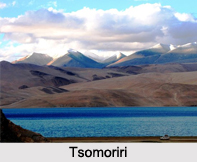 Wetlands of Jammu and Kashmir are now in the state of conservation and it allures thousands of tourists for its rich diversity of flora and fauna. Some of the Wetlands of Jammu And Kashmir are Hokersar Wetlands of Srinagar, Jammu and Kashmir, Anchar Lake, Srinagar, Jammu and Kashmir, Hygam Wetlands, Mirgund Wetlands, Wular Lake, Shallabugh, Hygam Wetlands, Narkara Wetlands, Manibugh Wetlands and Chatlam and Fushkoori Wetlands.
Wetlands of Jammu and Kashmir are now in the state of conservation and it allures thousands of tourists for its rich diversity of flora and fauna. Some of the Wetlands of Jammu And Kashmir are Hokersar Wetlands of Srinagar, Jammu and Kashmir, Anchar Lake, Srinagar, Jammu and Kashmir, Hygam Wetlands, Mirgund Wetlands, Wular Lake, Shallabugh, Hygam Wetlands, Narkara Wetlands, Manibugh Wetlands and Chatlam and Fushkoori Wetlands.
Surinsar-Mansar Lake
Surinsar-Mansar Lake is about the freshwater composite lake. It is located in the semi-arid Panjab Plains, adjoining the Jhelum Basin with catchments of sandy conglomeratic soil, boulders and pebbles. Surinsar is rain-fed without permanent discharge, and Mansar is primarily fed by surface run-off and partially by mineralised water through paddy fields, with inflow increasing in rainy season. The lake has Lissemys punctata, Aspideretes gangeticus, and Mansariella lacustris. This composite lake is high in micro nutrients for which it is an attractive habitat, breeding and nursery ground for migratory waterfowls like Fulica atra, Gallinula chloropus, Podiceps nigricollis, Aythya fuligula, and various Anas species. The site is socially and culturally very important with many temples around owing to its mythical origin from the Mahabharata period. Although the lakes support variety of fishes, fishing is discouraged for religious values. The main threats are increasing visitors, agricultural runoff, bathing and cremation rituals. Conservation is focused on awareness-raising.
Manibugh Wetland
Manibugh Wetland is located in Pampore Area of Jammu and Kashmir. Manibugh Wetland was managed for organized shooting for many Bollywood and regional films.
Hokersar Wetlands
Hokersar Wetlands is located at the northwest Himalayan biogeography province of Jammu and Kashmir. Hokersar Wetlands has the snow-draped Pir Panchal Range as its back drop. Hokera wetland is only 10 km from scenic paradise of Srinagar, Srinagar District, Jammu and Kashmir. A natural perennial wetland contiguous to the Jhelum River basin, it is the only site with remaining reedbeds of Kashmir and pathway of 68 waterfowl species like Large Egret, Great Crested Grebe, Little Cormorant, Common Shelduck, Tufted Duck and endangered White-eyed Pochard, coming from Siberia, China, Central Asia and Northern Europe. It is an important source of food, spawning ground and nursery for fishes, besides offering feeding and breeding ground to a variety of water birds. Typical marshy vegetation complexes inhabit like Typha, Phragmites, Eleocharis, Trapa, and Nymphoides species ranging from shallow water to open water aquatic flora.
Narkara Wetlands
Narkara is a Wetland region in Jammu and Kashmir. Narkara receives the water from Doodh ganga region of Jammu and Kashmir. It is now a tourist delights in Srinagar of Jammu and Kashmir
 Wular Lake
Wular Lake
Wular Lake is the largest freshwater lake with extensive marshes of emergent and floating vegetation, particularly water chestnut, that provide an important source of revenue for the State Government of Jammu and Kashmir and fodder for domestic livestock. Wular Lake supports an important fishing industry and is a valuable source of water for irrigation and domestic use. The area is important for wintering, staging and breeding birds.
Anchar Lake
Anchar Lake is the marshland area and the natural lake formed from the Dal Lake area. It was declared as a dead lake, because of its deteriorated condition. The encroachments by surrounding residents are going on war footing basis with illegal real estate constructions.
Tsomoriri Wetland Conservation Reserve
Tsomoriri Lake is a freshwater in Jammu and Kashmir. It is a brackish lake lying at 4,595m above sea level, with wet meadows and borax-laden wetlands along the shores. Tsomoriri Lake is said to represent the only breeding ground outside of China for one of the most endangered cranes, the Black-necked crane (Grus nigricollis), and the only breeding ground for Bar-headed geese in India. The Great Tibetan Sheep or Argali (Ovis ammon hodgsoni) and Tibetan Wild Ass (Equus kiang) are endemic to the Tibetan plateau, of which the Changthang is the westernmost part. The barley fields at Korzok have been described as the highest cultivated land in the world.
Related Articles
Jammu and Kashmir, Indian State
Eco Parks in India
Jammu and Kashmir Eco Parks
Anchar Lake
Wular Lake
Temples of Jammu and Kashmir



















